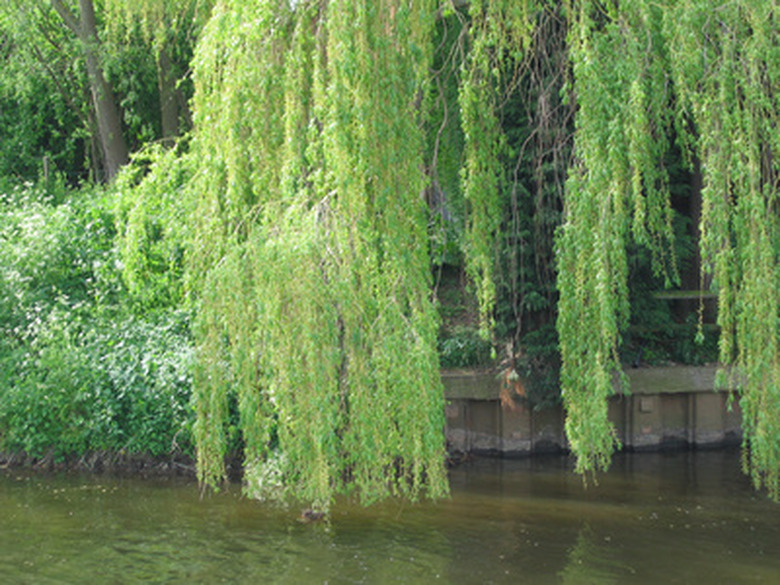Willow Trees In Montana
Montana gardeners often plant willow trees to add color and ornamental interest to lawns and gardens. While Eastern Montana experiences a semi-arid continental climate with very harsh winters, Western Montana enjoys more of a Pacific climate with cool summers and mild winters. If you live in Montana, select willow trees according to intended use, foliage and bark color, general culture, potential problems and mature size. Various willow tree varieties perform well in Montana landscapes.
Peachleaf Willow
Peachleaf willows (Salix amygdaloides) quickly reach between 35 and 50 feet in height. This willow variety bears several trunks, spreading crowns, slightly drooping branches and yellow to orange twigs. The narrow, green leaves turn a non-showy, yellowish-green during autumn. Yellow or green catkins appear in April and May before the foliage emerges. The peachleaf willow prefers moist to wet soils in various lighting conditions. This short-lived tree frequently suffers from wind damage, diseases and insect infestations. Montana gardeners often use the peachleaf willow as an erosion control plant along riverbanks and streams.
- Montana gardeners often plant willow trees to add color and ornamental interest to lawns and gardens.
- Montana gardeners often use the peachleaf willow as an erosion control plant along riverbanks and streams.
Violet Willow
The violet willow tree (Salix daphnoides) earned its name because its green stems turn attractive, deep purple shades during fall and winter. This willow species features gray-white catkins that bloom in spring before the leaves emerge. Mature violet willow trees range from 10 to 20 feet in height and 4 to 15 feet in width. Native to the Himalayas and Asia, this tree likes moist soils in fully sunny locations. Blights and borer infestations sometimes occur. The violet willow performs well along Montana streams or ponds.
Babylon Weeping Willow
The Babylon weeping willow (Salix babylonica) features long branches that droop gracefully to the ground. Indigenous to North China, this willow variety reaches up to 40 feet in both height and spread. Babylon weeping willows like moist soils in full sun positions. This tree bears brown or green branches and leaves with pale green tops and silver-green undersides. These leaves turn a non-showy, yellow-green color in the fall. Babylon weeping willows bloom in April and May, featuring non-showy, silver-green catkins. This willow variety has weak wood that cracks easily. This tree generally doesn't work well in yards or gardens because of its extensive root system. Montana gardeners often plant the Babylon weeping willow tree along ponds, streams, rivers and lakes.
- The violet willow tree (Salix daphnoides) earned its name because its green stems turn attractive, deep purple shades during fall and winter.
- The Babylon weeping willow (Salix babylonica) features long branches that droop gracefully to the ground.
Pussy Willow Tree
The pussy willow tree (Salix caprea), also called the goat willow tree, reaches up to 25 feet in height with spreads up to 15 feet. This smaller willow species can also be trained as a hedge or large shrub. Pussy willow trees bloom in March and April, with male trees featuring pink-gray catkins and females displaying green catkins. While this tree prefers moist soils, it can tolerate dry soils better than other willow varieties. This pussy willow tree sometimes suffers from powdery mildew, leaf spots and lacebug infestations. Montana gardeners often plant the pussy willow tree in low areas where other trees can't grow.
